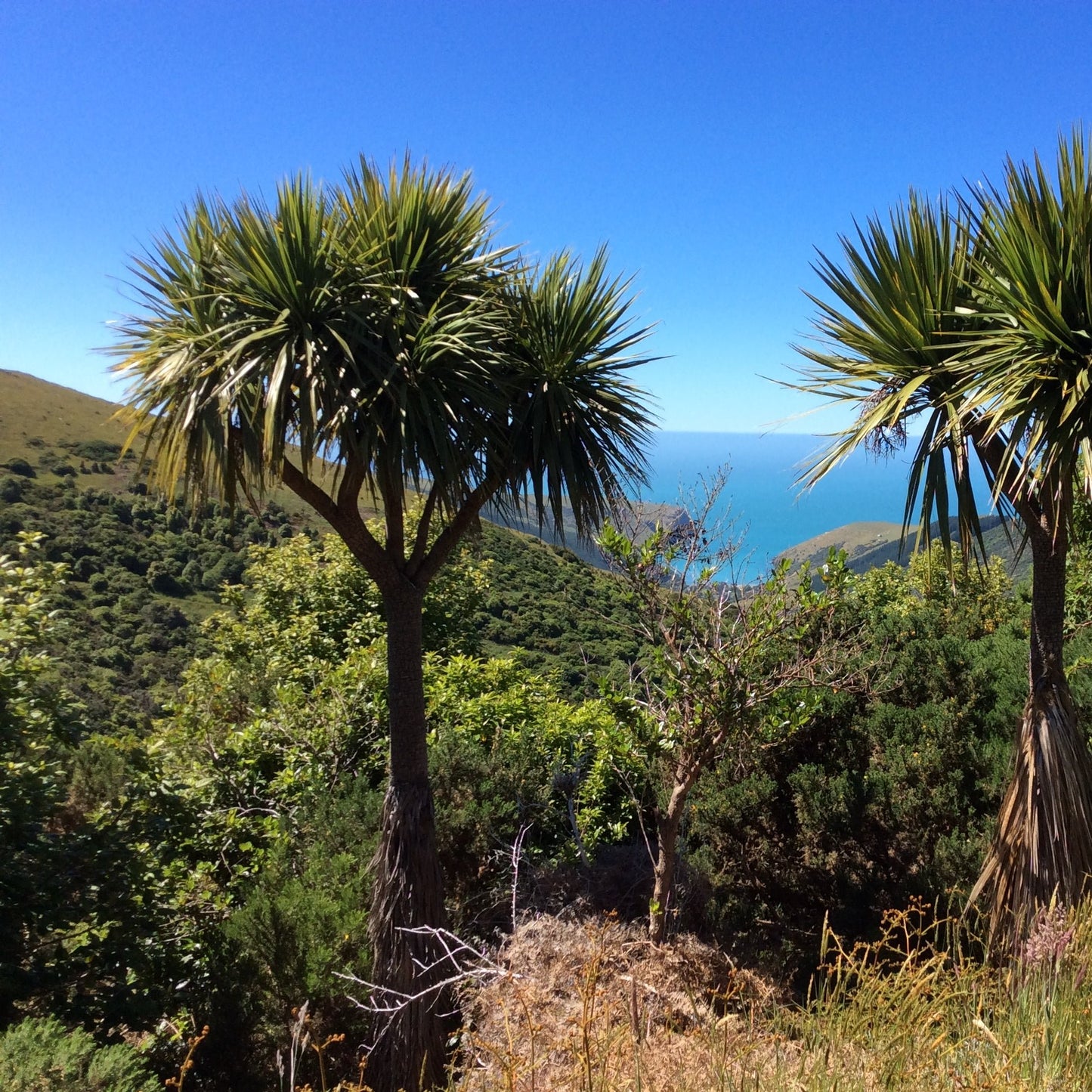VIRIAR
Cordyline australis, Cabbage Palm, Torbay Palm - 50 pieces fresh seeds
Cordyline australis, Cabbage Palm, Torbay Palm - 50 pieces fresh seeds
No se pudo cargar la disponibilidad de retiro
Plant Description
Name: Cordyline australis
Common Name: Cabbage Tree, New Zealand Cabbage Palm
Cordyline australis, commonly known as the Cabbage Tree or New Zealand Cabbage Palm, is a striking and versatile plant native to New Zealand. It is popular in gardens and landscapes worldwide for its architectural form, drought tolerance, and distinctive foliage.
The Cabbage Tree typically features a single, slender trunk topped with a cluster of long, sword-shaped leaves that are dark green or variegated, depending on the variety. The leaves can grow up to 1 meter (3 feet) long, creating a spiky, palm-like appearance. Over time, the plant may develop multiple trunks, adding to its sculptural look. In late spring to early summer, Cordyline australis produces fragrant, creamy-white flowers on tall, branching panicles, followed by small, white to bluish fruits. This plant can reach heights of 10-20 meters (33-66 feet) in its native habitat, though it often remains smaller in cultivation.
Cultivation of Cordyline australis
Conditions:
- Light: Cordyline australis thrives in full sun to partial shade. It performs best in sunny locations where it receives at least 4-6 hours of direct sunlight daily, but it can tolerate some shade, especially in hotter climates.
- Temperature: This plant prefers mild to warm climates and can tolerate a range of temperatures, from cool to subtropical. It is hardy down to about -9 °C (15 °F), making it suitable for temperate regions. In areas with severe winters, protection or container growing may be necessary.
- Soil: The Cabbage Tree prefers well-draining, fertile soil but can adapt to various soil types, including sandy or loamy soils. It thrives in slightly acidic to neutral soil conditions. Good drainage is essential to prevent root rot.
- Water: Once established, Cordyline australis is drought-tolerant and requires minimal watering. Water regularly during the first growing season to establish a deep, extensive root system. Afterward, water sparingly, allowing the soil to dry out between watering. Overwatering should be avoided, particularly in cooler climates.
Planting and Care:
- Planting: Choose a location with full sun or partial shade and well-draining soil. When planting, dig a hole twice the width of the root ball and as deep as the root ball. Backfill with soil and water thoroughly. If planting in a container, use a pot with drainage holes and a well-draining potting mix.
- Fertilization: Feed Cordyline australis with a balanced, slow-release fertilizer in the spring. An annual application of compost or organic mulch can also help maintain soil fertility and retain moisture.
- Maintenance: Prune dead or damaged leaves to maintain a tidy appearance. As the plant grows, lower leaves may naturally yellow and die; these can be removed to keep the plant looking its best. In colder climates, mulch around the base to protect roots during winter.
Growing from Seeds
- Seed Preparation: Fresh seeds generally have the best germination rates. Soak the seeds in warm water for 24 hours before sowing to soften the seed coat.
- Sowing: Sow the seeds in a well-draining seed-starting mix, such as a combination of sand, perlite, and peat. Plant the seeds about 1 cm (0.4 inches) deep and cover lightly with soil.
- Germination Conditions: Place the seed tray in a warm, bright area with temperatures around 20-25 °C (68-77 °F). Keep the soil moist but not waterlogged. Germination can take anywhere from a few weeks to several months.
- Care for Seedlings: Once seedlings appear, provide bright, indirect light and continue to keep the soil moist. Transplant seedlings into individual pots or into the garden once they are large enough to handle and the weather is warm.
Cordyline australis is an attractive and hardy plant that adds a bold, tropical touch to gardens and landscapes. Its dramatic foliage and easy care make it a popular choice for both beginner and experienced gardeners.
Shipping & Returns
Shipping & Returns














